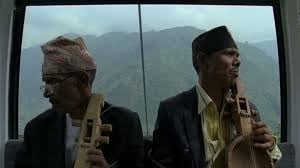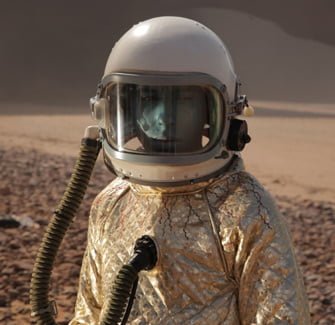Manakamana (2014) screening @ The Reliance
June 16, 2015
Set entirely within the four walls of a cable car high above a jungle in Nepal, Stephanie Spray and Pacho Velez’s Manakamana (2014) is an extraordinary, mesmerising documentary that’s like nothing else you’ll see this year. Part anthropological study and part art-installation, the film is composed of 11 carefully framed long takes that last the duration of the cable car’s journey up or down the mountain. To make their film Spray and Velez set up a 16mm film camera inside the car and recorded the journeys of pilgrims and tourists on their way to the Hindu temple of Manakamana, the wish fulfilling goddess. Each journey takes place in uninterrupted real time, with each one lasting around 10 minutes – roughly the same length as a 400-foot roll of 16mm film.

Unlike most documentaries, the film contains nothing in the way of contextual information. Without specialist knowledge of Nepalese culture or a certain amount of reading around, it would be hard even to know where the film takes place. But this is not an oversight on the part of the filmmakers – it’s a deliberate strategy. This ambiguity is in fact a large part of the film’s appeal, and what makes it such a beguiling experience. In Manakamana, Spray and Velez are not interested in telling you what to think – the guiding principle of the film is to show rather than to tell. This is a characteristic that is shared by many of the films produced – like Manakamana – under the aegis of the much-celebrated Sensory Ethnography Lab (SEL) at Harvard University. The SEL is an ‘experimental laboratory’ responsible for some of the most unique, exciting and unclassifiable documentary films of recent years, including 2012’s immersive and disorientating industrial fishing documentary Leviathan and 2009’s gorgeous non-fiction-western Sweetgrass.
Manakamana only adds to the SEL’s reputation for producing boundary pushing, challenging and distinctive non-fiction cinema. The film is a beautiful and meditative study of character and place, a kind of portrait (and landscape) photography in motion that leaves a great deal of interpretation in the hands of the viewer. As we travel up and down the mountain with these people – some alone, some in pairs or groups – we get to know them purely through observation. Spending extended periods of time looking at, listening to and carefully watching these people we become attentive to their behaviour, to their words, actions and gestures. We begin to guess at their histories, their social status, their connection to one another, their reasons for making the trip, and their desires, hopes and wishes.

Tragically, the recent earthquake in Nepal has added a significance and urgency to this desire to know more about the people featured in the film. Many of the individuals involved in the production of Manakamana have been directly affected by this disaster. In a statement released by the film’s distributor, co-director Stephanie Spray reports that many homes in the village of the film’s production manager, Ram Krishna, have been destroyed or damaged. ‘Everyone is sleeping outdoors and the people are in need of medicine, water, tents and rice’ says Spray. As well as the destruction of homes and villages, Spray also notes that the livelihoods of the people featured in the film, many of whom are musicians who rely on tourists for their income, has been severely jeopardised by the earthquake. On Wednesday the 17th of June, the Reliance will be screening this unique film, with all proceeds going directly to people affected by the earthquake in Nepal through the filmmaker’s preferred route.
Andy Moore.
Find out more about the screening here or visit the Facebook event page
There’s also a second screening of the film coming up at Otley Courthouse on the 2nd July too. Click here for more info




Comments